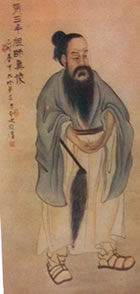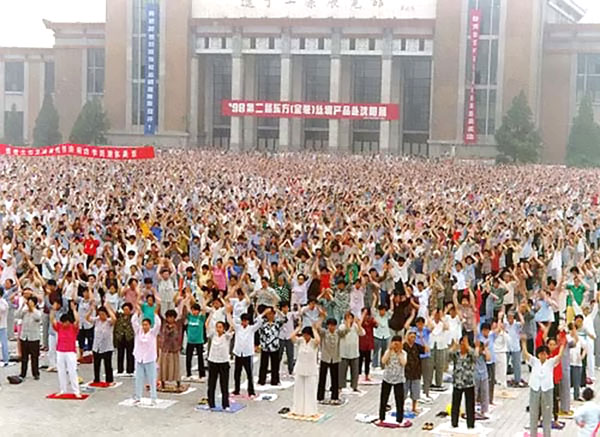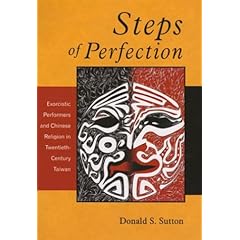Journal of Asian Martial Arts
/ I was excited to see Douglas Wile
I was excited to see Douglas WileFifteen years ago when this magazine first came out I was ecstatic. Imagine a martial arts magazine which insists on footnotes and bibliographies in every article! I thought it was a dream come true after years of wishing I was still 10 years old so I could appreciate martial arts writing.
The current addition has 13 contributors. There are two without degrees, two have M.A.'s, one has an M.S., one is an Acupuncturist (M.A.), and eight have Ph.D.'s. Wow, and still most of the writing leaves me wishing for younger days. To be fair, most academic writing is genetically predestined to be boring. At least this stuff is mostly written by people involved in the arts, not by "objective outsiders."
I guess I am a child of the Internet, because I'm finding it harder and harder to read full length books and articles. I still love old media, but it takes so long to get to the point. I mean this stuff should have one of those "Don't operate heavy machinery" warning labels. Again, to be fair, I'm addicted to pithy blog posts and I needed to catch up on some sleep.
 Douglas Wile's article is called "Taijiquan and Daoism; From Religion to Martial Art--and Martial Art to Religion." To really do it justice I would have to read the whole thing again. Honestly, I'm in one of those deep practice phases where a few hours of profound internal training makes me want to sleep-- y'all will have to settle for my vague dream like memories.
Douglas Wile's article is called "Taijiquan and Daoism; From Religion to Martial Art--and Martial Art to Religion." To really do it justice I would have to read the whole thing again. Honestly, I'm in one of those deep practice phases where a few hours of profound internal training makes me want to sleep-- y'all will have to settle for my vague dream like memories.The gist of Wile's article is that facts about Taijiquan prior to 1900 are really hard to come by but that hasn't stopped lineage holders and historians from freely making sh-t up and pretending it's factual.
One can easily understand why a lineage holder would want to make stuff up. It makes them seem like they have the only key to the chest of treasures while at the same time allowing them the (false) modesty of claiming that their teacher's teacher's teacher was like, dude, really, really good.
It's harder to understand why historians would make stuff up. In America if we catch a historian making stuff up, we use their books for compost. But then again, the various "wings" of the Communists and the Nationalists, were in a propaganda war to prove that only their (death cult) ideologies and allegiances would make Chinese people better and stronger.
Even though Wile spends a lot of time explaining what all these 20th Century scholars thought, I have the feeling he would agree with me when I say, taijiquan has picked up so much baggage we ought to throw out all the books and start over.
Wile dances around the question: Why in light of so little direct evidence for Taijiquan's Daoist roots, are there so many people trying to prove a connection? He writes about Taijiquan's "inventor," the magical dreamer Daoist immortal Zhang Sanfeng:
For sheer contentiousness, the Zhang Sanfeng case can only be compared to issues of racism, sexism, abortion and homosexuality in American culture. At the dawn of the 21st century, the pendulum has once again swung towards the myth-makers. Western practitioners of taijiquan, with their monotheistic, atheistic, or "only begotten son" backgrounds are apt to view Zhang Sanfeng as simply an historical figure with some innocent Daoist embellishments. They are not likely to understand China's culture wars, polytheism, or embodied immortality..."
In summary, his point is that Taijiquan never really had much to do with Daoism, until 20th century people started mixing in a lot of Neidan (inner alchemy), TCM jargon, some quotes from the Daodejing and the Zhuangzi, and claims about health. Oh yeah, and some stories. And then a bunch of fake modern scholars said none of that is true-- but what they said wasn't true either (so there!). Now that running a business isn't banned in China, there is this new feel good, feel strong, feel Chinese, feel Taijiquan-is-part-of-Daoism, marketing ethos. No real content.
And Wile gets kind of mad about it,
"Daoist Chauvinism should never be underestimated, and we need only remind ourselves that some Daoist apologists have claimed that Buddhism sprang from seeds planted by Laozi when he rode westwards on his ox."
 Them's figtin' words. Bumper stickers have all but disappeared from San Francisco (which I attribute to uniformity of thought); however, I spotted one today. It read, "Lighten Up!"
Them's figtin' words. Bumper stickers have all but disappeared from San Francisco (which I attribute to uniformity of thought); however, I spotted one today. It read, "Lighten Up!"For the record, those Daoist "apologists," were not writing history, they were writing secret scripture. The name Laozi means "old seed," but if we are talking about the Santianneijing
I respect Wile's contribution to understanding the history of Taijiquan, I thank him for letting us know it's all a bunch of lies!
My argument with him is this: Orthodox Daoism never claimed Taijiquan as a Daoist art and I doubt it ever will. Monastic Daoism has of late decided that Taijiquan is part of its shtick. Since the 1980's is has also decided that gongfu movies are part of its shtick, big whoop. Monastic Daoism never really had a central authority, from the sidelines it kinda seems like Buddhism with a little inner alchemy for the "we must appear to be loyal Chinese" set. All this means very little.
If you want to know what the origins of Taijiquan are, you are going to have to soften your definitions, and blur your categories. Taijiquan only came into being because it was able to obscure it's origins in religion, popular culture, and secret societies. By the start of the 20th century participation in trance cults or exorcistic and processional dance, was considered politically dangerious and ideologically backwards. That's why they invented and then tried to tack on the suspicious label, "purely philosophical" Daoism.
Likewise, some combination of fear, modernity, and ideology led people to strip down their communal ritual performance traditions into pure "Martial Arts."
People over here were arguing about why they took the Fajing (power issuing?) out of Yang and Wu styles of Taijiquan. I'll tell you why. Fajing is a way to strike terror into your audience, a way to let people know the god has taken possession of the dancer.
Now, if you'll excuse me, I'm going to go put the Fajing back in my form!






 Processions for popular Heavenly gods mimicked the parading that magistrates and other representatives of Earthly government employed. In one account, Sutton describes how a magistrate and his entourage are forced to wait for some offensive amount of time while a god (often a youth with a painted face) passes by in a sedan chair dressed in magistrate like robes with a simular but perhaps larger entourage.
Processions for popular Heavenly gods mimicked the parading that magistrates and other representatives of Earthly government employed. In one account, Sutton describes how a magistrate and his entourage are forced to wait for some offensive amount of time while a god (often a youth with a painted face) passes by in a sedan chair dressed in magistrate like robes with a simular but perhaps larger entourage. Thus confessions were associated with both healing and merit. The threat of torture in the near future or by
Thus confessions were associated with both healing and merit. The threat of torture in the near future or by  Aggression, of course, is a constant "cause" of qi wasting. From a Daoist point of view, if you lose your temper, you probably caused yourself a very minor internal injury, but you also caused some kind of reaction in the world around you. That reaction, like a ripple in a pond might dissipate gently, but it also might lead to a tidal wave somewhere down the line. And since we have no way of really knowing, losing your temper is seen as inappropriate. I think it is important to note, that from a Daoist point of view, well timed aggression may be worth the risk.
Aggression, of course, is a constant "cause" of qi wasting. From a Daoist point of view, if you lose your temper, you probably caused yourself a very minor internal injury, but you also caused some kind of reaction in the world around you. That reaction, like a ripple in a pond might dissipate gently, but it also might lead to a tidal wave somewhere down the line. And since we have no way of really knowing, losing your temper is seen as inappropriate. I think it is important to note, that from a Daoist point of view, well timed aggression may be worth the risk. Then there is the corner of medicine and elite scholarly exchange which merges in to the much larger realm of commerce.
Then there is the corner of medicine and elite scholarly exchange which merges in to the much larger realm of commerce. I was delighted that
I was delighted that 

 I read an essay years ago by Mark Elvin that readers of this blog might want to check out. It is called, "Tales of Shen and Xin: Body-Person and Heart-Mind in China During the Last 150 Years." It was published in the Zone Series from M.I.T. Press.
I read an essay years ago by Mark Elvin that readers of this blog might want to check out. It is called, "Tales of Shen and Xin: Body-Person and Heart-Mind in China During the Last 150 Years." It was published in the Zone Series from M.I.T. Press. The Art Work came from
The Art Work came from  Wow, it was fun putting those three names together.
Wow, it was fun putting those three names together. Wilhelm Reich
Wilhelm Reich Reich is also extraordinary because he was probably the first to say that Nazi's and Communists are the same. His reason was also way ahead of his time: They both used the same repressive physicality to perpetuate fear of self-awareness; a fear which makes people want to be told what to do.
Reich is also extraordinary because he was probably the first to say that Nazi's and Communists are the same. His reason was also way ahead of his time: They both used the same repressive physicality to perpetuate fear of self-awareness; a fear which makes people want to be told what to do. Katherine Dunham
Katherine Dunham  Here is an article from
Here is an article from